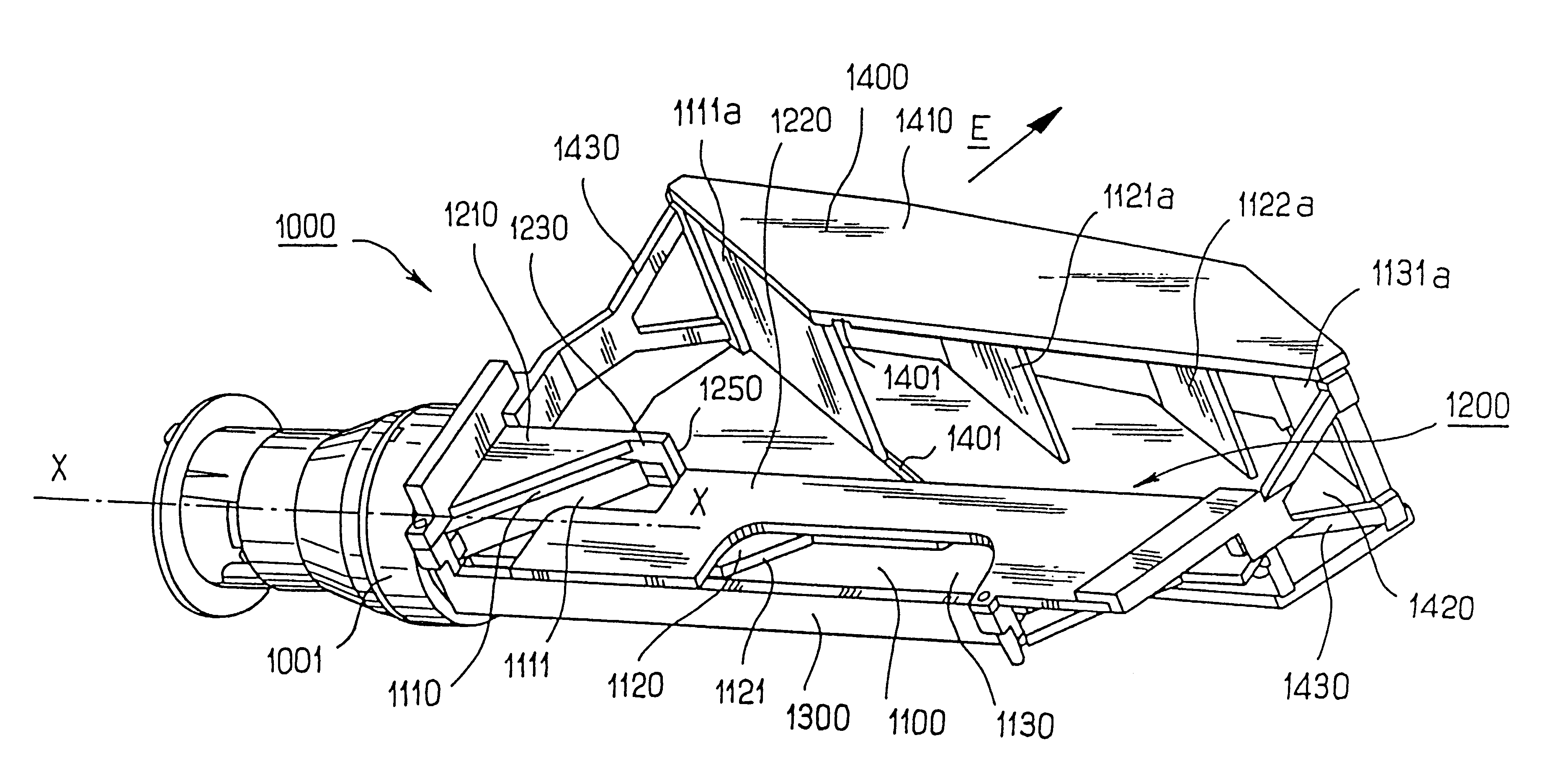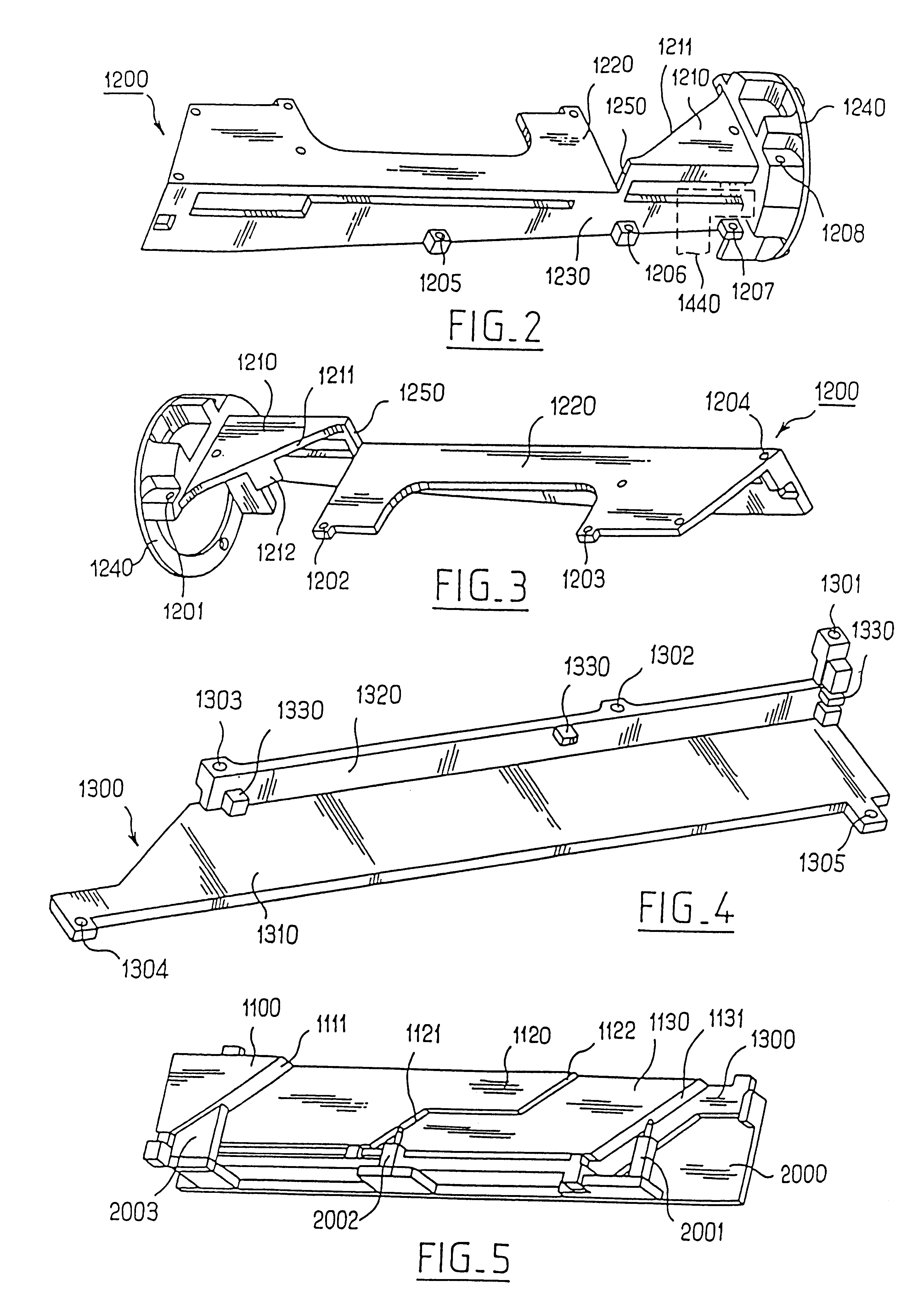Lighting module with a light guide for a motor vehicle
- Summary
- Abstract
- Description
- Claims
- Application Information
AI Technical Summary
Benefits of technology
Problems solved by technology
Method used
Image
Examples
Embodiment Construction
FIG. 1 shows a lighting module 1000 for a motor vehicle, which comprises a "real" light source, i.e. a source generating light when energized with power, together with means 1001 for concentrating the light radiation issued from the light source on one end of a light guide 1100.
The means for concentrating the light radiation emitted from the light source consists essentially of a reflector, or elliptical mirror, 1001. The light source itself (not visible in the drawings) consists of the filament of a motor vehicle lamp, which is mounted in the housing seen at the left-hand end of FIG. 1, and which is preferably disposed in the axis of the elliptical reflector 1001 at one of its foci. The light flux from the light source is reflected by the reflector 1001 in a set of rays which converge to the focal zone of the second focus of the elliptical reflector.
The light guide 1100, for guiding the light in the lighting module 1000, comprises a plurality of oblique reflective facets 1111, 1121...
PUM
 Login to View More
Login to View More Abstract
Description
Claims
Application Information
 Login to View More
Login to View More - R&D
- Intellectual Property
- Life Sciences
- Materials
- Tech Scout
- Unparalleled Data Quality
- Higher Quality Content
- 60% Fewer Hallucinations
Browse by: Latest US Patents, China's latest patents, Technical Efficacy Thesaurus, Application Domain, Technology Topic, Popular Technical Reports.
© 2025 PatSnap. All rights reserved.Legal|Privacy policy|Modern Slavery Act Transparency Statement|Sitemap|About US| Contact US: help@patsnap.com



